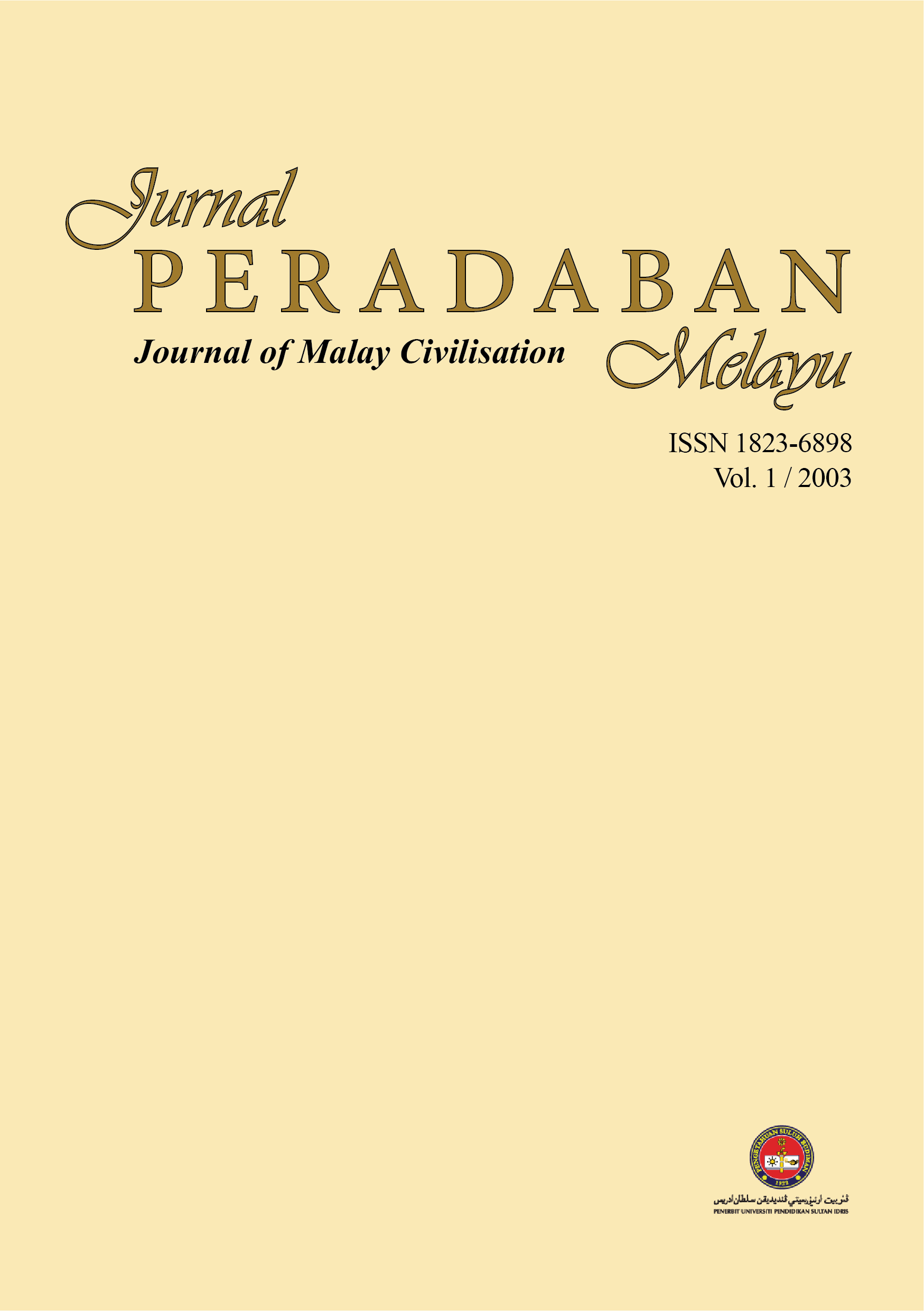The Voice of the Subaltern's Subaltern The Tionghua Peranakan Women Writers (1908-1935)
Keywords:
Subaltern's Subaltern, Tionghua, 1908-1942, Historiography, ChineseAbstract
In her article "Can the Subaltern Speak?" (Spivak 1996), Gayatri Spivak argues that the subaltern's voice cannot be heard and will not be heard because of the all consuming power of a hegemony and the "nostalgia for lost origins" (1996: 204) which necessarily envelopes the subaltern. Ironically, her doubts in retrieving subaltern history follows her initial calls for Subaltern Studies to include the female subaltern.
Downloads
References
Anderson, Benedict. 1985. Imagined Communities. Norfolk: Thetford Press Ltd.
Boehmer, Elleke. 1995. Colonial & Postcolonial Literature. New York: Oxford University Press.
Dipesh Chakrabarty. 2002. Habitations Qf Modernity: Essays in the Wake of Subaltern Studies. London: University Chicago Press.
Kortenaar, N. Ten. 1995. "Beyond Authenticity and Creolization: Reading Achebe, Writing Culture", PMLA January.
Leo Suryadinata. 1981. Peranakan Chinese Politics in Java 1917-1942. Singapore: Singapore University Press.
.1989 (ed.). The Ethnic Chinese in the Asean States Bibliographical Essays. Singapore: Inst Of South East Asian Studies.
.1992. Pribumi Indonesians, The Chinese Minority and China. Singapore: 3rd Ed. Heinemann Asia.
. 1997. The Culture ofthe Chinese Minority. Singapore: Inst. of Southeast
Asian Program.
Loomba, Ania. 1998. Challenging Colonialism. Routledge: London.
Nio Joe Lan. 1939. Sastera Indonesia-Tionghoa. Djakarta: Gunung Agung.
Pan, Lynn. 1999. Sons of the Yellow Emperor. Mandarin: Great Britain.
Ricklefs, M.C. 1994. Sejarah Indonesia Modern. Yogyarkarta, Indonesia: Gadjah Mada University Press.
Ranajit Guha & Gayatri Spivak. 1988. Selected Subaltern Studies. United States of America: Oxford Uni. Press.
Said, Edward. 1995. Orientalism. England: Penguin Books.
. 2000. A Critical Introduction. United Kingdom: Polity Press.
Salmon, Claudine. (1984). Sastra Cina Peranakan dalam Bahasa Melayu. Djakarta: Balai Pustaka.
Sears, Laurie J. (ed.). 1996. Fantasizing the Feminine in Indonesia. Durham & London: Duke University Press.
Shellabear, Rev. W. G.. "An Introduction to the Language of the Straits-born Chinese " The Council Malaysian Branch ofthe Royal Asiatic Society. A Centenary Volume 1977/78: pp. 36-45.
Shohat, Ella. 1993. 'Notes on the "Postcolonial"'. Social Text 31/32: pp 99-113.
Showalter, Elaine. 1999. A Literature of Their Own: From Charlotte Bronte to Doris Lessing. Great Britain: Virago Press.
Wilkinson, Sue & Celia Kitzinger 1996. Representing the Other: A Feminism & Psychology Reader. London: Sage Publications.
Katalog Induk Koleksi Sastera Cina Peranakan. 1988. Perpustakaan Tun Sri Lanang, Universiti Kebangsaan Malaysia.
Wang Gung Wu. 1990. "Are Indonesian Chinese Unique?: Some Observations" in Community and Nation. Australia: Allen & Unwin.
1998. "Introduction; Migration and New National Identities" in The Last Half Century of Overseas Chinese. Aberdeen, Hong Kong: Hong Kong Universiti.
Electronic References
len Ang. 1998. Migrations of Chineseness: Ethnicity in the Postmodern World. http://www.a1ß.uwa.edu.au/Motsplureiels/MP798ia.html
Maia Sevilla-Sharon. 2001. The Chinese Question in Indonesia: The Economic Factor in Ethnic Conflict.
http://www.coIumbia.edu/cu/cear/issues/fa1199/text-only/sharon.htm





